Lo siento no encontre nada en Castellano


Lanzhou Class (Type 052C) Guided Missile Destroyer (DDG)
The Type 052C (Lanzhou class) is the latest guided missile destroyer (DDG) built by Jiangnan Shipyard at Shanghai for the PLA Navy. It is the most modern and sophisticated surface combatant ever deployed by the PLA Navy. So far two hulls (170, 171) have been built, with the first ship joining service in July 2004. The acquisition of the Type 052C DDG represents yet another big step forward in China’s effort to build a ‘blue water’ naval force.
--------------------------------------------------------------------------------
A D V E R T I S E M E N T
--------------------------------------------------------------------------------
PROGRAMME
Following the launch of two Type 052B (Guangzhou class) guided missile destroyers in 2002, Jiangnan Shipyard continued to build two more advanced Type 052C (Lanzhou class) destroyers. The first ship Lanzhou (pennant number 170), which was laid down in late 2002 and launched on 29 April 2003, entered service with the PLA Navy in July 2004. The second ship (pennant number 171) was launched on 30 October 2003 and is expected to join the service in 2005. It is not known whether more ships are to follow.
The Type 052C shares the same hull design with the Type 052B constructed by the same shipyard shortly before, but its weapon systems and sensors are much more advanced. The Type 052C features a range of newly developed systems not previously seen onboard other Chinese warships. The most notables include the HQ-9/S-300F air defence missiles launched from the vertical launching system (VLS), the four-array multifunction phased array radar (PAR) similar to the U.S. AN/SPY-1 Aegis, and the YJ-85 (C-805) anti-ship missile. Technological advances in the Type 052C has brought the Chinese navy the true fleet air defence capability for the first time in its history.
The destroyer’s overall air defence, surface strike, and antisubmarine warfare (ASW) capabilities will largely depend on how well different weapon systems and sensors are integrated together by the combat system. Most Chinese warships use the command and control system derived from the French Thomson-CSF TAVITAC, but the Type 052C might have a newly developed system with improved processing power. The command. control, communications, computers, intelligence, surveillance, and reconnaissance (C4ISR) capabilities of the Type 052C are very likely to be beneficiaries of China’s fast growing information technology (IT) and telecommunications industry since the late 1990s.
Some reports indicated that the Type 052C might be used to provide fleet air defence cover for the future Chinese aircraft carrier battle group. With its advanced air defence system, the ship could also be used as the command ship for a surface combatant fleet. Nevertheless, the Type 052C gives the PLA Navy the capability which was not previously possessed by the force. The building of two Type 052C DDGs represents the latest progress in the Chinese navy’s effort to transform itself from a costal defence force to a ‘blue water’ oceanic navy.
DEPLOYMENT
Pennant No.
Name
Fleet
Laid Down
Launched
Commissioned
170 Lanzhou South 2002 29 Apr 03 July 04
171 ? South 2003 30 Oct 03 ?
DESIGN
The ship’s construction is carried out through a modular approach to save construction time and costs. The two Type 052C destroyers are based on the same hull design as the two Type 052B destroyers which were launched earlier in the same shipyard, but are fitted with different weapon systems and sensors for different missions.
Compared to the Type 052B, the forward superstructure of the Type 052C is much taller, embedded with four fixed phased array radar antennas on the four sides. There is a helicopter flight deck and a hanger to accommodate two Russian Ka-28 Halix-A ASW/SAR helicopters.
AIR DEFENCE
Details of the air defence missile system onboard the Type 052C is unclear, although unconfirmed reports indicated that it might be the shipborne variant of the Chinese indigenous Hong Qi-9 (HQ-9) long-range SAM system. The semi-active radar guided HQ-9 SAM is believed to have been under development since the mid-1990s, and is said to be comparable in general performance to the Russian S-300 and U.S. Patriot. Another report indicated that this might be the S-300F (NATO codename: SA-N-6 Grumble) purchased from Russia.
A total of 48 air defence missiles are launched from eight 6-cell VLS. Each missile launch cell has its own lid, a design which apparently differs from the Russian-style revolver VLS. The missile system adopts the so-called ‘cold launch’, in which the missile was first ejected from the launch tube, and then ignites its rocket engine at low altitude. This launch style avoids the complex flame and gas exhausting pipes on the Western-style ‘hot launch’ VLS.
Short-range air defence is provided by two Type 730 close-in weapon systems (CIWS). Coupled with the air defence missile system, they provide a multi-layer, omni-direction air defence against enemy aircraft and sea-skimming anti-ship cruise missiles (ASCMs).
WEAPONS
The Type 052C is equipped with two four-cell anti-ship missile (YJ-85 or YJ-12?) launchers installed between rear mast and the helicopter hanger. The tube-ship launcher indicates that the missile is a new design different from the previous YJ-8 (C-801) series anti-ship missile. Detailed information on the missile’s performance is not available.
There is also one compact single 100mm gun installed on the front deck of the ship.
SENSORS
There are four fixed phased array antennas in the forward superstructure of the Type 052C, with two covering the forward hemisphere and the other pair covering the rear hemisphere. The similar arrangement can be seen on the US Navy's Arleigh Burkes and the Japanese Kongos. Reports indicate this radar system may be a co-development program with the Kvant-Radiolokatsiya company of the Ukraine. The band and performance of this radar have not yet been publicly reported. The radar may be a developed version of that first seen on the 970 weapons test ship, and could either be S-Band or Russian-style X-Band.
The anti-ship missiles are guided by the Band Stand radar located on top of the bridge and a Light Bulb datalink on the hanger. The same guidance package was also found onboard the Type 052B DDG.
The Type 052C has a metric-wave radar with Tagi antenna for long-range air/surface search and electronic countermeasures (ECM). The radar is possibly a modified variant of the Type 517H-1 Knife Rest operating at A-Band.
The ship is also expected to have a new generation of Aegis-like C3I system.
COUNTERMEASURES
A new EW suite featuring phased array antennas similar to AN/SLQ-32 EW system is on the side of the forward mast.
The ship also has four multi-purpose 16-barrel chaff/decoy multiple rocket launchers installed in the middle of the ship.
PROPULSION
The propulsion system might be in the form of CODOG consisting of two Ukraine-made DA80/DN80 gas turbines rated at 72,600hp (55 MW) and two indigenous diesels (Chinese copy of the MTU 20V956TB92) rated at 8,840 hp (6.5 MW).
Date Last Updated: 3 December 2004


 http://www.sinodefence.com/navy/surface/052c.asp
http://www.sinodefence.com/navy/surface/052c.asp






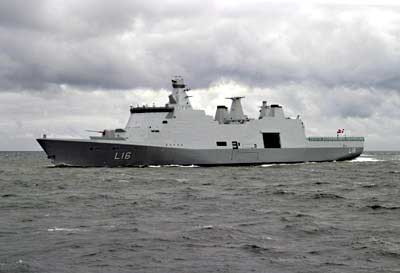
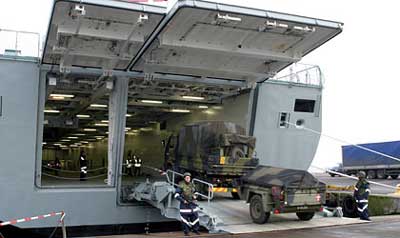
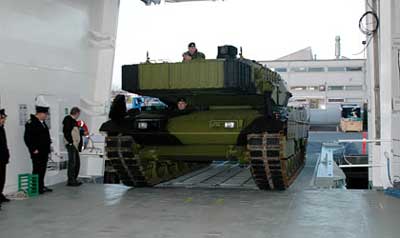
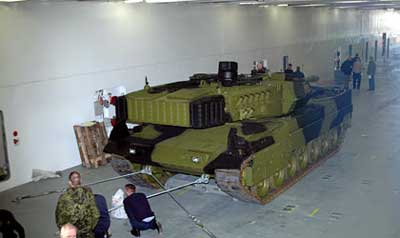
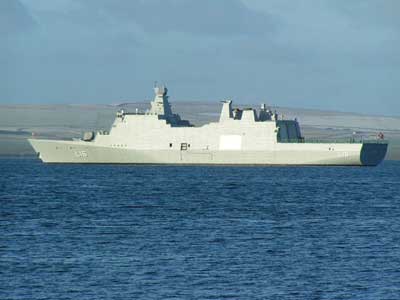
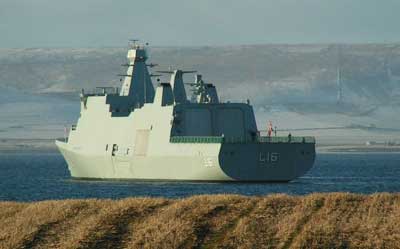





 Lanzhou Class (Type 052C) Guided Missile Destroyer (DDG)
Lanzhou Class (Type 052C) Guided Missile Destroyer (DDG)


